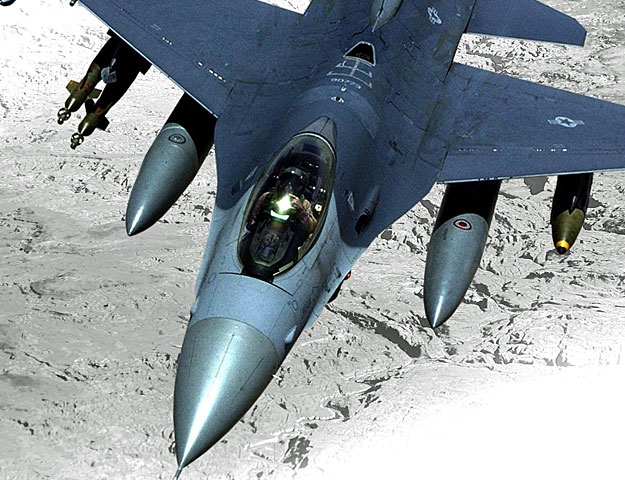Harris Corporation has received a four-year, $55 million contract to perform sustainment work on the electronic warfare system used by the U.S. Air Force to protect B-52s and C-130s from radar-guided threats. The contract was received during the first quarter of Harris’ fiscal 2017.
Harris will redesign one of the ALQ-172’s Line Replaceable Units (LRU-1) as part of wider efforts to increase the electronic warfare suite’s reliability, supportability and availability.

“Hostile air defense systems are becoming more sophisticated and accessible in global conflict zones,” said Ed Zoiss, president, Harris Electronic Systems.
“With the B-52 set to remain a key component of U.S. strategic airpower for the next two decades, it is essential that it be equipped with innovative electronic warfare technology capable of defeating future threats.”
Crews flying B-52 and B-1B aircraft have a challenging and essential mission, and as global military strategy pivots, they face a range of new threats.
(Learn More. Courtesy of Harris Corporation and YouTube)
With larger radar cross sections and missions designed to penetrate well-defended and contested airspace, strategic aircraft have specific and complex needs when it comes to electronic warfare situational awareness and self- protection.
Tactical fighters and rotary aircraft experience a wide range of missions, from penetrating contested airspace and suppression of air defense systems, to providing close air support, reconnaissance, insertion and exfiltration.
Their aircrews face wildly varying conditions, including supersonic speeds, low altitude flight and densely populated hostile environments. Remaining focused on these complex, critical missions in the face of proliferating threats is a huge challenge for aviators.
Harris airborne EW systems support and enable missions across all these conditions by helping aviators understand the threat landscape in order to detect, avoid, and where necessary, defeat threats at every level of engagement.
In addition to a new LRU design, Harris will develop software, support customer testing and other solutions for the U.S. Air Force. In 2015, Harris received a series of orders to perform similar redesigns of other ALQ-172 subsystems, including LRU-4, LRU-7 and LRU-8.
 Harris Corporation is a leading technology innovator, solving customers’ toughest mission-critical challenges by providing solutions that connect, inform and protect. Harris is organized into four business segments: Communication Systems, Space and Intelligence Systems, Electronic Systems and Critical Networks.
Harris Corporation is a leading technology innovator, solving customers’ toughest mission-critical challenges by providing solutions that connect, inform and protect. Harris is organized into four business segments: Communication Systems, Space and Intelligence Systems, Electronic Systems and Critical Networks.
















